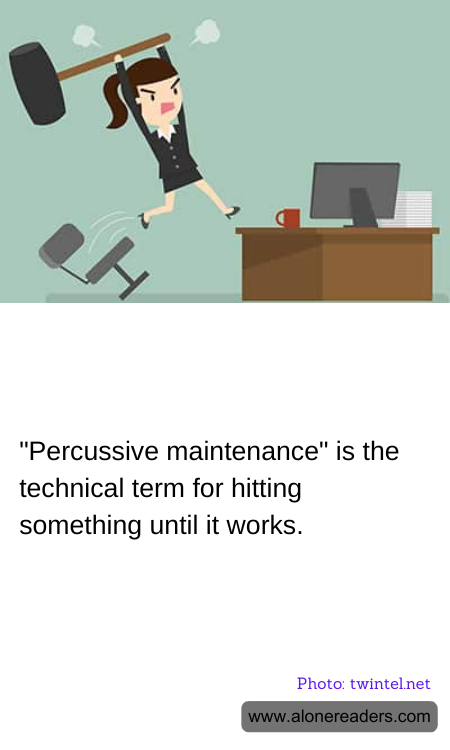
"Percussive maintenance" might not appear in official engineering manuals, but it has found a humorous and somewhat practical place in the lexicon of equipment repair. This colloquial term refers to the technique of striking an electronic device or mechanical system to make it work again. While it may sound like a joke, there's a bit of real-world logic underlying this unorthodox method.
The origin of percussive maintenance is somewhat nebulous, but it is a widely recognized practice among engineers, technicians, and even everyday users of technology. The idea is that a sharp tap or a firm smack can reseat loose components or jostle components into proper alignment, temporarily resolving a malfunction. It is often used as a last resort when more conventional troubleshooting methods fail, or when a quick fix is necessary, and professional repair services or tools are not immediately available.
Despite its occasional effectiveness, percussive maintenance is not recommended by manufacturers. Repeated physical impact can cause unseen damage, worsening existing issues or creating new problems. For delicate electronics or precision machinery, this method poses a significant risk of harming sensitive components, potentially leading to irreparable damage and voiding warranties.
Where it often sees success, however, is with older, more robust equipment where connections might become oxidized, or components slightly misaligned due to thermal expansion and contraction, vibration, or the gradual loosening over time. A well-placed tap can indeed sometimes coax a bit more life out of an old television or a stuttering hard drive. Notably, in the days of cathode-ray tube (CRT) televisions and monitors, percussive maintenance was a common fix for minor issues like flickering screens and drifting alignments.
Percussive maintenance also holds a cultural spot in the folklore of troubleshooting, often depicted humorously in television and films as a character grows frustrated with a malfunctioning device and gives it a whack, miraculously returning it to functionality. In reality, while it might occasionally serve as a temporary fix, it is important for users to seek professional advice or consider more secure and reliable methods of maintenance and repair. Emphasizing preventive maintenance and proper handling can help avoid situations where one feels the need to resort to physical persuasion to get devices working.